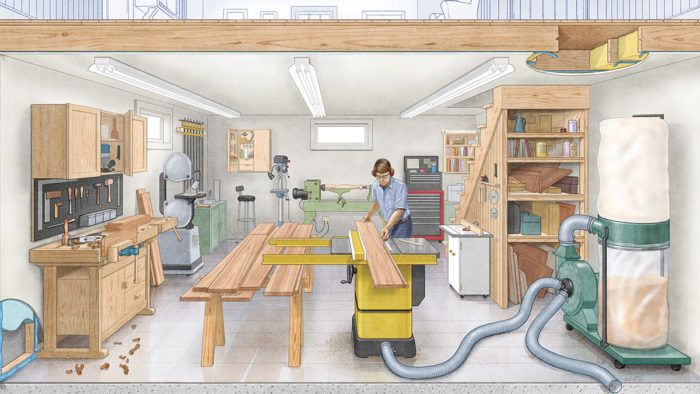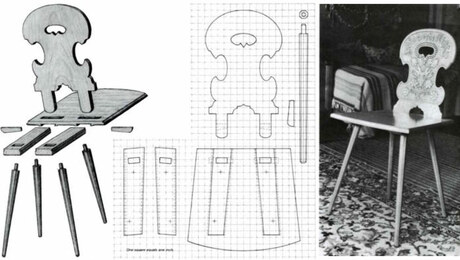
I walked into my first real workshop in tech school—a big industrial space where I spent half my time in high school learning the machinist trade. Like all good shops, it was a warm, well-lit place with a powerful array of good tools at the ready.
Once I got over my intimidation and learned the unique capabilities of each machine, that shop felt like Willie Wonka’s inventing room, a place where I could create almost anything. I loved coming through the doors, smelling the oil in the air, and feeling time slip away as I dropped back into a project.
I didn’t stick with the machinist trade, but it stuck with me. After college (an unusual mix of engineering, English, and journalism) and sometime during my first newspaper job, I became interested in woodworking—a no-brainer for a former machinist looking to make things again. And when I bought my first small home, job one was creating another inventing room.
At first, I had only a small corner of a damp basement to dedicate to my new hobby, and I made it work, filling it with a simple plywood workbench, a small used tablesaw, and a few hand tools. That bought me some time to rehab the old carriage house out back, adding a woodstove for warmth and then filling it with a real workbench and, gradually, the basic tools and machines a new woodworker needs.
I was back home again in my backyard woodshop—back where I started in tech school. Like many readers of Fine Woodworking, I had created a much-needed refuge from my computer-based job, a place to get out of my head and into my hands. Woodworking became a ritual: Walk out to the shop, start a fire, and start creating. I loved that old-timey garage with its scrap-eating woodstove, and was sad to leave when life took me elsewhere.
Two great workshops later, I understand that the shop is the most important tool of all, providing safe haven and organized storage for tools and supplies, enough floor and table space to get stuff done, a measure of climate control for comfort, and a wash of light to help me do my best work.
No matter how much space you dedicate to your hobby, you’ll need some advice on maximizing it and making it work better. If it’s cluttered, cold, dark, or otherwise dreary, you’ll hesitate to use it. If it’s cozy, clean, bright, and organized, you’ll be as happy as I am walking through the door.
From lights, heat, and smart layout to machine mobility and effective storage, many of my favorite shop ideas have come from the pages of FWW. I could name dozens of articles that gave me invaluable advice on setting up shop, but here are just a few of my all-time faves.
—Asa Christiana
 |
How to Make Better Use of Your Shop SpaceSmart floor plans for workshops of all sizes Asa Christiana |
 |
A Layout Kit for Small ShopsModeling in two or three dimensions is a lot easier than moving around your heavy machinery to get a shop plan you like John Yurko |
 |
15 Tips for Basement WorkshopsFWW’s online audience weighs in on muffling noise, stifling dust, adding light, and reducing moisture Thomas McKenna |
 |
Choosing and Using CastersWhat casters work best in which workshop applications, and how to build two versatile rolling bases John White |
 |
Heating Your ShopFor every shop and climate, there’s an efficient solution Andy Engel |
 |
Let There Be LightA blanket of bright light makes any workshop a nicer place to be Nancy McCoy |



















Log in or create an account to post a comment.
Sign up Log in